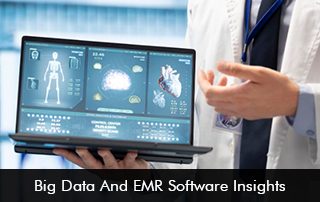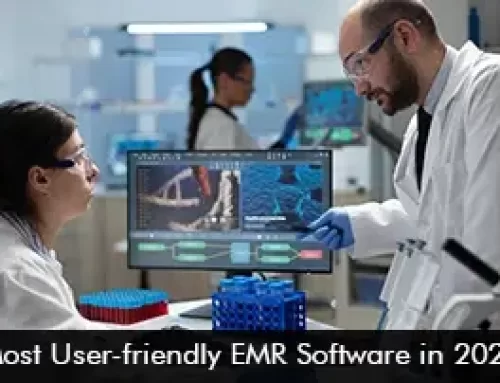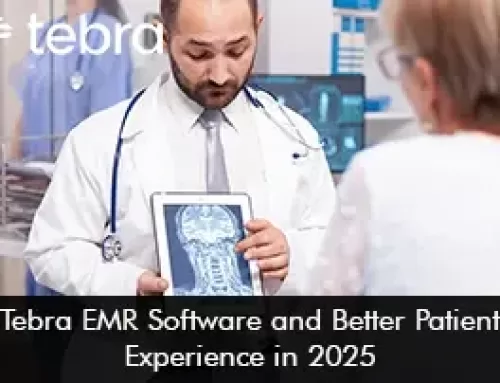The healthcare industry is undergoing a digital revolution, and two key technologies leading the charge are big data and EMR software. Together, they are reshaping how medical professionals diagnose, treat, and manage patient care.
In this blog, we’ll explore how big data analytics enhances EMR systems, the benefits for healthcare providers, and real-world applications that are improving outcomes.
How Big Data and EMR Software Work Together
Electronic Medical Records (EMR) systems store vast amounts of patient data, from medical histories to lab results. When combined with big data analytics, this information becomes a goldmine for insights.
1. Data Aggregation and Integration
EMR software collects structured and unstructured data from multiple sources, including:
-
Patient demographics
-
Clinical notes
-
Lab reports
-
Prescription records
Big data tools process this information, identifying patterns that would be impossible to detect manually.
2. Predictive Analytics for Better Decision-Making
By analyzing historical patient data, healthcare providers can:
-
Predict disease outbreaks
-
Identify high-risk patients
-
Personalize treatment plans
For example, algorithms can flag diabetic patients at risk of complications based on past glucose levels and lifestyle factors.
3. Real-Time Monitoring and Alerts
Integrating big data with EMR software enables real-time tracking of patient vitals. If a patient’s blood pressure spikes unexpectedly, the system can alert doctors immediately, preventing emergencies.
Key Benefits of Combining Big Data and EMR Software
1. Improved Patient Outcomes
With data-driven insights, physicians can make more accurate diagnoses and recommend tailored treatments. Studies show that hospitals using predictive analytics reduce readmission rates by up to 30%.
2. EMR Software Cost Reduction and Efficiency
Big data helps eliminate redundant tests, streamline workflows, and reduce administrative burdens. Clinics can optimize staffing based on patient inflow trends, saving time and money.
3. Enhanced Population Health Management
Public health agencies use aggregated EMR data to:
-
Track disease trends (e.g., flu outbreaks)
-
Allocate resources effectively
-
Develop preventive care programs
4. Fraud Detection and Compliance
Machine learning algorithms can detect unusual billing patterns, reducing fraudulent claims. Additionally, automated compliance checks ensure adherence to regulations like HIPAA.
Real-World Applications
1. EMR Software and Early Disease Detection
Researchers at the Mayo Clinic used big data analytics on EMR records to identify early signs of sepsis, reducing mortality rates by 20%.
2. Precision Medicine
Oncology centers analyze genetic data alongside EMR records to recommend personalized cancer treatments, improving success rates.
3. Operational Efficiency in Hospitals
Johns Hopkins Hospital implemented a big data-driven scheduling system, cutting patient wait times by 40% and increasing bed availability.
Challenges and Considerations
While the synergy between big data and EMR software is powerful, healthcare providers must address:
1. Data Privacy and Security
With sensitive patient information involved, robust encryption and access controls are non-negotiable.
2. EMR Software Interoperability Issues
Not all EMR systems communicate seamlessly. Standardizing data formats (e.g., FHIR) is crucial for effective analysis.
3. Staff Training and Adoption
Clinicians need training to interpret data insights effectively. User-friendly dashboards and simplified reports can help.
The Future of Big Data in EMR Software
Emerging trends include:
-
AI-powered diagnostics – Algorithms that suggest diagnoses based on symptoms and history.
-
Blockchain for data integrity – Secure, tamper-proof medical records.
-
Wearable integration – Continuous health monitoring synced with EMRs.
Final Thoughts
The marriage of big data and EMR software is revolutionizing healthcare, from improving individual patient care to transforming public health strategies. As technology advances, clinics and hospitals that leverage these tools will lead the way in efficiency, accuracy, and patient satisfaction.
Is your practice ready to harness the power of data-driven healthcare? Start by evaluating EMR systems with strong analytics capabilities and explore how big data can elevate your patient care.







